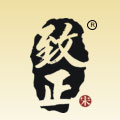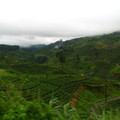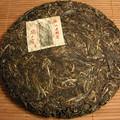Theme - Gushu
Teas - Gushu
2016 Chawangpu Manzhuan Gu Shu Huang Pian
 0 reviews
0 reviewsWhen people pick the tea from ancient trees, usually they pick one bud and three to four leaves....
2015 Yunnan Yi Wu Zheng Shan Ye Sheng Hong
 0 reviews
0 reviewsmimořádně zajímavý čerstvý (sklizeň říjen 2015) červený čaj sklizený z divoce rostoucích...
2015 Chawangpu Collection
 0 reviews
0 reviewsThis spring we bought entire collection of puerh teas from Cha Wang Shop produced in 2015 and we...
2015 Chawangpu Hekai Gushu Xiao Bing
 1 review
1 reviewMaterial for this cake came from Man Nan Lao Zhai in Hekai mountain. Man Nan Lao Zhai is home of...
2014 White2Tea New Amerykah 2
 1 review
1 reviewAn old arbor Menghai blend. Thick body, lingering kuwei [pleasant bitterness], and plenty of...
HaiWan Wild Tea 99
 0 reviews
0 reviewsYiwu Hai Wan wild tea - special grade (pu-erh.sk favorite) Year: 1999 Weight:...
Quotes - Gushu
„Mr. Gao pointed out some caterpillars that were fattening themselves on tea leaves. “No pesticides used here.”“

Quotes Tags: Pu-erh, Gushu, Tea production
„ye sheng; 野生 - Wild, feral. Whilst there is still a comparatively large number of truly wild tea trees in Yunnan, most tea does not come from them, coming rather from arboreal trees.i.e. trees that were originally cultivated, but then left untended for many years, or bushes. “

„Mr. Gao showed us how to identify gu shu (ancient tree) tea leaves by looking at their texture, rubbing them between your fingers, and eating them raw. Old tea trees produce thicker, more leathery leaves that don’t easily come apart when you rub them. And gu shu buds should be white & shiny. When you chew them, the flavor is very bitter but there is also a strong sweet fragrance, and the juice is relatively easy to swallow. Tai di cha (terrace plantation tea) is also bitter but with a strong, lasting astringency on the sides & front of the tongue, and the juice is harder to swallow.“

Quotes Tags: Pu-erh, Gushu, Tea production, Experiencing tea
Photos - Gushu
Video - Gushu
Tea by region
Remember what tea did you drink year ago?
Create your own collection of favorite teas and keep the track what you have drunk.
We will help you with tea selection.
Do you like quality loose tea?
We will help you to find the right one for you. Be inspired by tea ratings of other tea lovers. Rating stars could help you.


Latest posts
07.06.2025 @ 07:48:53 - lalo233:
The unforgiving landscapes of Arrakis in Dune: Awakening demand a mastery of combat....
07.06.2025 @ 07:48:50 - lalo233:
The unforgiving landscapes of Arrakis in Dune: Awakening demand a mastery of combat....
01.01.2016 @ 18:14:35 - Eternal Spring:
WeRateTea.com wish you all the best for 2016!...
07.12.2015 @ 09:07:02 - sypalino:
I decided to taste this tea 2 weeks after delivery. The cake is lightly pressed, so...
09.11.2015 @ 21:58:19 - Eternal Spring:
Comparison of 2013 Bada Pu-erh.sk with <a...
09.11.2015 @ 09:34:07 - Eternal Spring:
Lao Yu 2013 is now about 2,5 years old tea and out of this 1,5 year stored in Europe....
09.11.2015 @ 09:33:11 - Eternal Spring:
Comparison of all three Lao Yu is now done :)
15.10.2015 @ 11:06:37 - Eternal Spring:
2015 Chawangpu Collection – I can only tell, that all teas are very good :)
09.10.2015 @ 10:31:19 - Eternal Spring:
It was quite long and difficult tasting to make a decision… There is still quite...
24.01.2015 @ 16:55:57 - Eternal Spring:
WeRateTea.com wish you all the best for 2015!...
Review your cup of tea.
Review the tea you are drinking and help other tea lovers to find the right cup of tea.



Theme
Quotes
„cha yi; 茶仪 - Tea ceremony. Not generally used to refer to the daily habit of tea making and drinking. Most habitual tea drinkers would be unlikely to use this term in reference to their tea-making activities. Not common parlance in Yunnan tea making circles“



 Shops
Shops





 Share on Facebook
Share on Facebook











